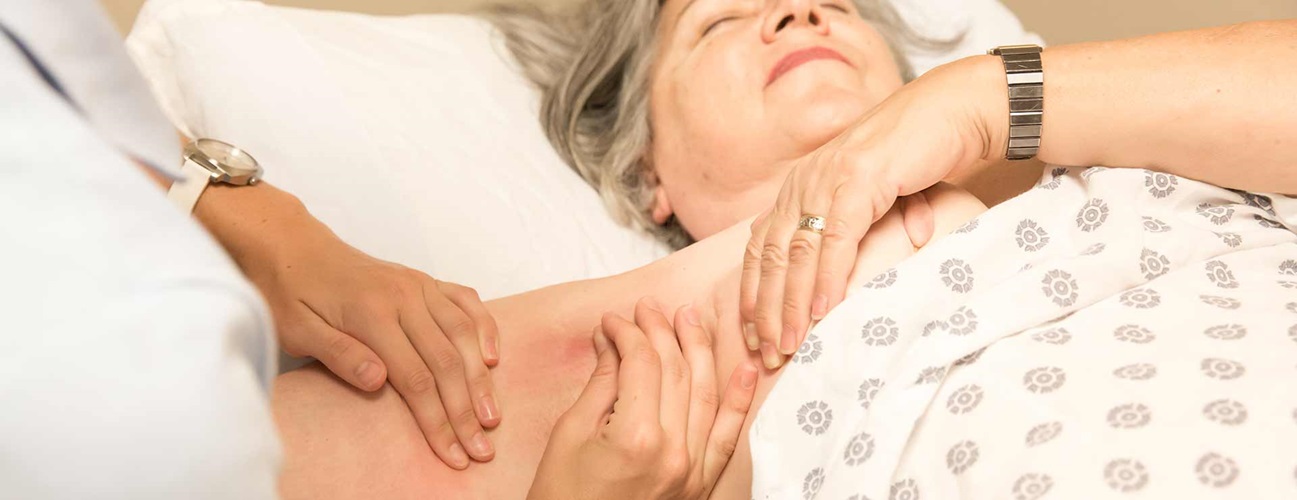Lymphadenitis
What is lymphadenitis?
Lymphadenitis is the medical term for enlargement in one or more lymph nodes, usually due to infection. Lymph nodes are filled with white blood cells that help your body fight infections. When lymph nodes become infected, it's usually because an infection started somewhere else in your body. Rarely, lymph nodes can enlarge due to cancer.
You have about 600 lymph nodes in your body, but normal lymph nodes may only be felt below your jaw, under your arms, and in your groin area.
A normal lymph node is small and firm. When lymph nodes become infected, they usually increase in size, become tender, and may be felt in other areas of your body during a physical exam.
Infections that spread to lymph nodes are usually caused by bacteria, a virus, or a fungus. It is important to learn how the infection spread into your lymph nodes so that the right treatment can be started.
Lymphadenitis can be one of two types:
- Localized lymphadenitis. This is the most common type. Localized lymphadenitis involves one or just a few nodes that are close to the area where the infection started. For example, nodes enlarged because of a tonsil infection may be felt in the neck area.
- Generalized lymphadenitis. This type of lymph node infection occurs in two or more lymph node groups and may be caused by an infection that spreads through the bloodstream or another illness that affects the whole body.
What causes lymphadenitis?
Lymphadenitis occurs when one or more lymph nodes are infected by a bacteria, a virus, or a fungus. When lymph nodes become infected, it's usually because an infection started somewhere else in your body.
What are the symptoms of lymphadenitis?
The main symptom of lymphadenitis is enlarged lymph nodes. A lymph node is considered enlarged if it is about one-half inch wide. Symptoms caused by an infected lymph node or group of nodes may include:
- Nodes that increase in size
- Nodes that are painful to touch
- Nodes that are soft or matted together
- Redness or red streaking of the skin over nodes
- Nodes that are filled with pus (an abscess)
- Fluid that drains from the nodes to the skin
The symptoms of lymphadenitis may look like other medical conditions or problems. Always see your healthcare provider for a diagnosis.
How is lymphadenitis diagnosed?
If you have lymphadenitis, the most important parts of your diagnosis are usually your history and the physical exam done by your healthcare provider. You may be asked about your symptoms, such as chills and fever, any recent travel, any breaks in your skin, and recent contact with cats or other animals. Then, during the physical exam, your healthcare provider will look for signs of infection near the enlarged lymph nodes.
These tests may be needed to help make the diagnosis:
- Blood tests to look for infection
- Taking a sample of tissue from the lymph node or fluid from inside the lymph node to study under a microscope
- Placing fluid from the lymph node into a culture to see what type of germs grow
How is lymphadenitis treated?
Your healthcare provider will figure out the best treatment based on:
- How old you are
- Your overall health and medical history
- How sick you are
- How well you can handle specific medicines, procedures, or therapies
- How long the condition is expected to last
- Your opinion or preference
The exact type of treatment depends on what type of infection has spread into your lymph nodes. Once an infection has spread into some lymph nodes, it can spread quickly to others and to other parts of your body, so it's important to find the cause of the infection and start treatment quickly.
Treatment for lymphadenitis may include:
- Antibiotics given by mouth or injection to fight an infection caused by bacteria
- Medicine to control pain and fever
- Medicine to reduce swelling
- Surgery to drain a lymph node that has filled with pus
Can lymphadenitis be prevented?
The best way to prevent lymphadenitis is to see your healthcare provider at the first sign of any infection or if you notice a tender swelling that feels like a little lump just beneath your skin. Make sure to cleanse and use antiseptic on any scratches or breaks in your skin and always practice good hygiene.
Living with lymphadenitis?
Take all your medicines exactly as prescribed and keep all your follow-up appointments. Don't use any over-the-counter medicines without first talking to your healthcare provider. Cool compresses and elevating the affected part of your body may help relieve pain and swelling while your medicines are doing their work.
In most cases, lymphadenitis clears up quickly with proper treatment, but it may take more time for lymph node swelling to go away. Be sure to let your healthcare provider know if your lymphadenitis symptoms come back.
When should I call my healthcare provider?
If your symptoms get worse or you have new symptoms, call your healthcare provider.
Key points about lymphadenitis
- Lymphadenitis is an infection in one or more lymph nodes.
- When lymph nodes become infected, it's usually because an infection started somewhere else in your body.
- Lymphadenitis can cause lymph nodes to become enlarged, red, or tender.
- Treatment may include antibiotics, and medications to control pain and fever.
- Early treatment of infections can prevent the development of lymphadenitis.
Next steps
Tips to help you get the most from a visit to your healthcare provider:
- Know the reason for your visit and what you want to happen.
- Before your visit, write down questions you want answered.
- Bring someone with you to help you ask questions and remember what your provider tells you.
- At the visit, write down the name of a new diagnosis, and any new medicines, treatments, or tests. Also write down any new instructions your provider gives you.
- Know why a new medicine or treatment is prescribed, and how it will help you. Also know what the side effects are.
- Ask if your condition can be treated in other ways.
- Know why a test or procedure is recommended and what the results could mean.
- Know what to expect if you do not take the medicine or have the test or procedure.
- If you have a follow-up appointment, write down the date, time, and purpose for that visit.
- Know how you can contact your provider if you have questions.




